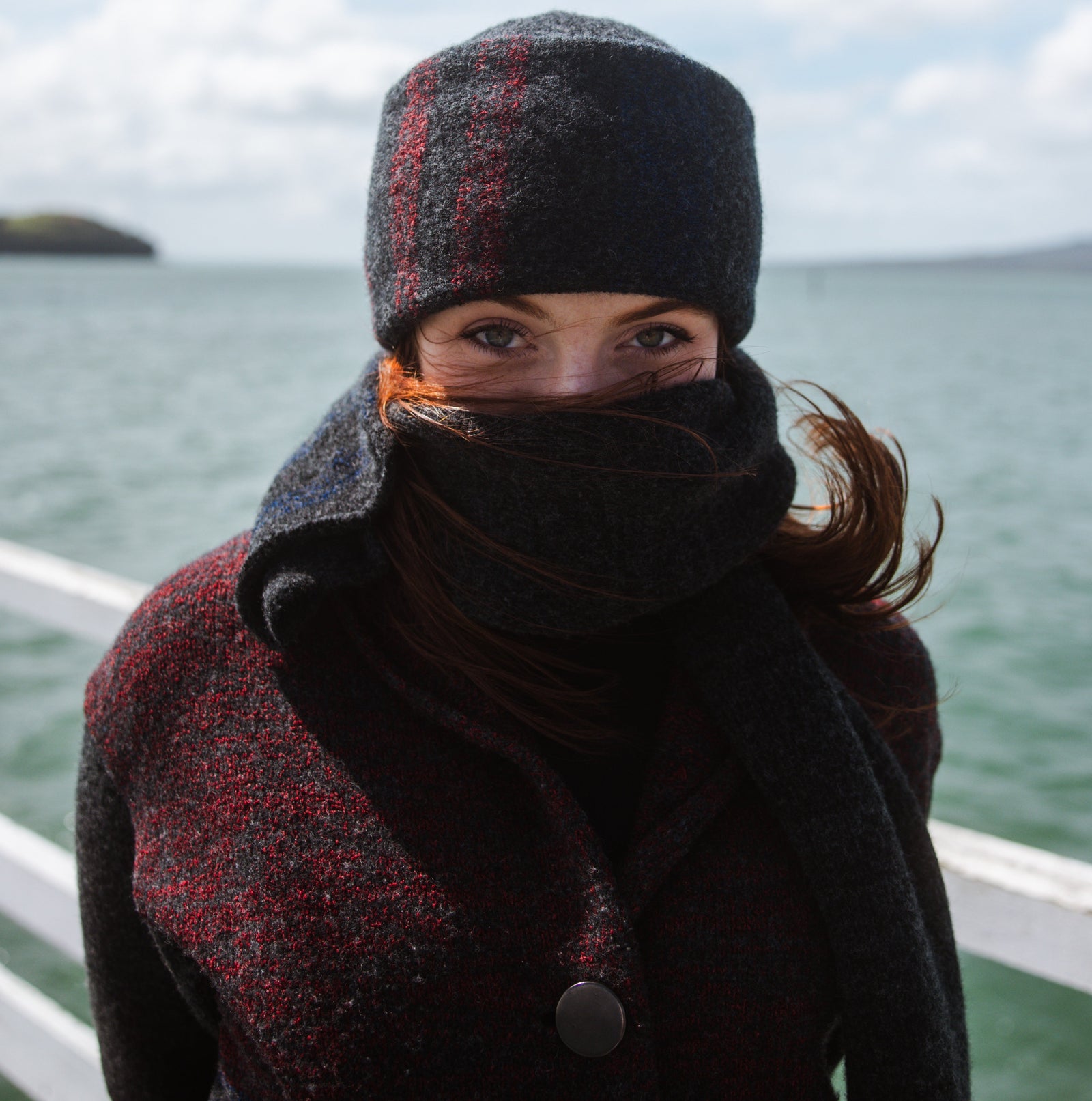Why Your Head and Neck Are the VIPs of Winter Warmth
When it comes to staying warm in winter, most people think about thick coats, thermal socks, and maybe a hot drink clutched in mittened hands. But your head and neck? They’re like the control panel for your body’s heating system — and if you don’t keep them insulated, the rest of your outfit is working overtime.
The Body’s Built-in Thermostat
Your body’s temperature is managed by thermoreceptors — little sensors sprinkled throughout your skin and organs. These send signals to the hypothalamus, your brain’s temperature command centre, which adjusts blood flow and other functions to keep you warm (or cool).
The neck, especially the back, is prime real estate for these sensors. It’s also home to major blood vessels like the carotid artery, which delivers warm blood from your core to your head. If this area is exposed to cold, the chill doesn’t just stay on the surface — it can influence how your whole body feels.
Head and Neck: Heat-Loss Hotspots
While the old “we lose 80% of our heat through our heads” myth has been debunked, the head and neck still lose heat quickly. Why?
-
They have a large surface area relative to their size.
-
They’re often the least covered parts of the body.
-
In cold conditions, the body constricts blood flow to the extremities — and yes, that includes parts of your head and neck — to prioritise core warmth.
In other words, uncovered head + exposed neck = a faster ticket to feeling like a human icicle.
How Knitted Warmth Makes a Difference
A well-made Aoraki Toque or Beanie isn’t just a fashion statement. The knitted fibres trap warm air close to your skin, acting like a private little greenhouse for your head. A snug beanie stops heat from escaping, while a scarf, cowl, or neck gaiter seals the gap where cold air loves to sneak in — the vulnerable base of the neck.
Together, they create a cozy “thermal seal” that keeps your body heat where it belongs. And in windy conditions, that protection against wind chill is worth its weight in merino wool.
More Than Comfort — It’s About Safety
Prolonged cold exposure to your head and neck can increase the risk of:
-
Hypothermia — when your core temperature drops dangerously low.
-
Frostbite — freezing damage to skin and tissue.
By keeping these areas warm, you’re not only staying comfortable, you’re protecting your body from genuine harm. Even in water-survival scenarios, keeping your head above water and your neck covered is vital because these zones are key points of heat loss.
The Science of Neck Warmth
The upper neck, right at the base of your skull, houses heat sensors that signal your body to conserve energy and heat when it’s cold. Wrap that area in something warm, and along with an Aoraki hat you’re helping your body’s thermostat work at peak efficiency.

